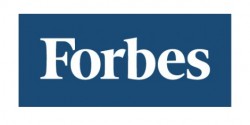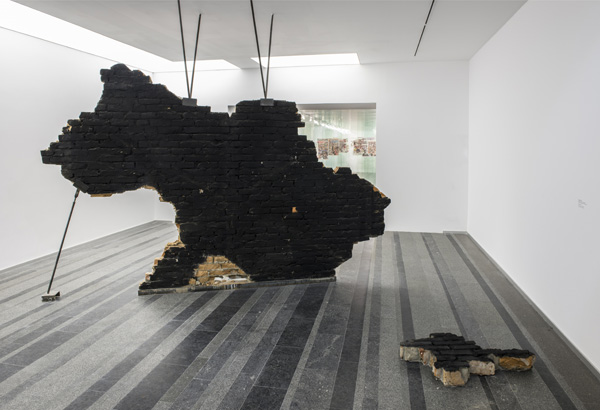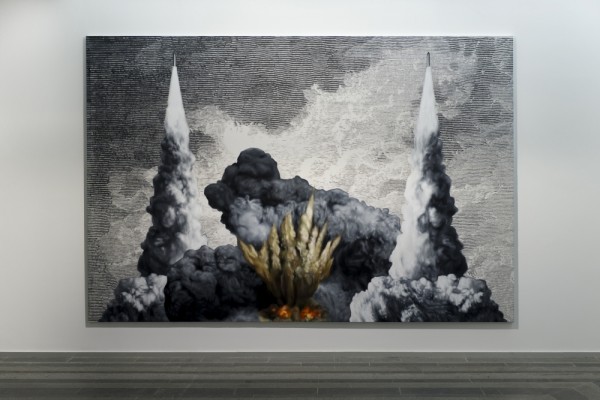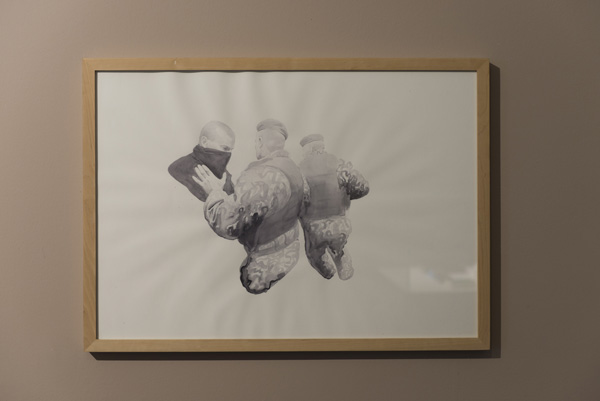Tuesday through Sunday from 12:00 until 21:00
Closed Monday
Admission is Free


Fear and Hope – a group exhibition by Ukrainian artists Mykyta Kadan, Zhanna Kadyrova and Artem Volokytin – opened this past weekend in Kyiv during the European Night of Museums. Inspired by the dramatic events that have changed Ukraine forever, the show invites guests to reflect on the Maidan protests that resulted in tragedy, violence and political change in Ukraine—and to think about the future.
“It has the possibility of opening up a conversation in society,” said Bjorn Geldhof, Fear and Hope’s curator.
Opened just steps away from Maidan, at Pinchuk Art Center, Fear and Hope features images of protesters clashing with police, explosions and newspaper collages all united by the same theme – philosophical reflections of Ukraine’s current crisis.

The show’s installations, paintings, sculptures, documentary images and paintings deal with conflict, drama and violence, as well as the question of Ukrainian identity, caught between, as Geldhof puts it, Soviet and neo-liberal-capitalistic ideologies.
The three artists, who are the winners of the Future Generation Art prize established by the Pinchuk Foundation, began working with the gallery before the Maidan uprising. But as the political turmoil unfolded, they joined the protests and started developing a new kind of work.
“They were citizens first, but they were also artists,” says Geldhof. “They started doing performances, images, on Maidan.” When the violence started all the artistic work stopped, he said, “because it was not possible anymore, being an artist inside the protests, it lost its place.”
Maidan wasn’t their first rodeo (Kadan, Kadyrova and Volokytin are the children of the Orange revolution and they’ve experienced how moving protests can quickly result in greater disillusionment). In their artistic expression, they attempt to be impartial. As Geldhof explains, “you are structurally critical about both sides even though you are, perhaps, more to one side than to another.”

On the Night of Museums, the art center was filled with spiffily-dressed young Ukrainians, looking no different than their stylish peers from, say, the New School in New York. Many of these kids joined the protests this past winter.
Just like in Maidan, at the art center people of all generations and walks of life mingled among the works. They wanted to see the artwork inspired by these extremely dramatic moments that they themselves lived through. Indeed, just like Fear and Hope’s curator wished, the exhibition provoked dialogue.
“The show doesn’t shock me because compared to the real events that took place some art work looks too pastel, too ‘watercolored,’” said Kiever Svetlana Dubanskaya, 52, who spent a fair amount of time in Maidan. She said she doesn’t think that the East of Ukraine really identifies with what happened in Kyiv. That can be partially explained by the information war and Russian TV channels, Dubanskaya said. “They were told that we were NATO, fascists, banderovtsy (a term for radical Ukrainian nationalists widely used by Putin’s propaganda)…” She sighed, saying that at least Kyiv and Kharkov, Ukraine’s second largest city, are somewhat on the same page, but if one goes further East things become more complicated.
The Russian threat and nervousness about the future is palpable, even in the sophisticated contemporary art space. Tatyana Fomina, 51, Kiever who also protested in Maidan and could hardly be called a fascist or banderovets, said her main wish is for peace and for Ukraine’s hopes to come true.
“Interesting but saddening,” she said about the show. “It’s titled Fear and Hope—but there is a lot more fear now. Hope is just something to envision.”
